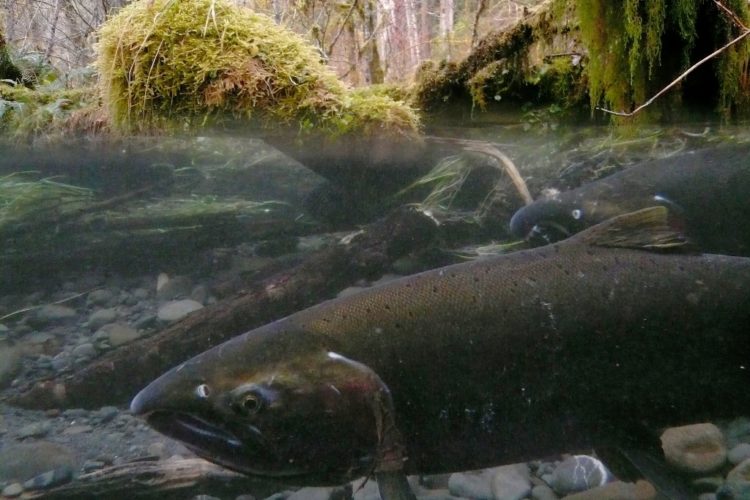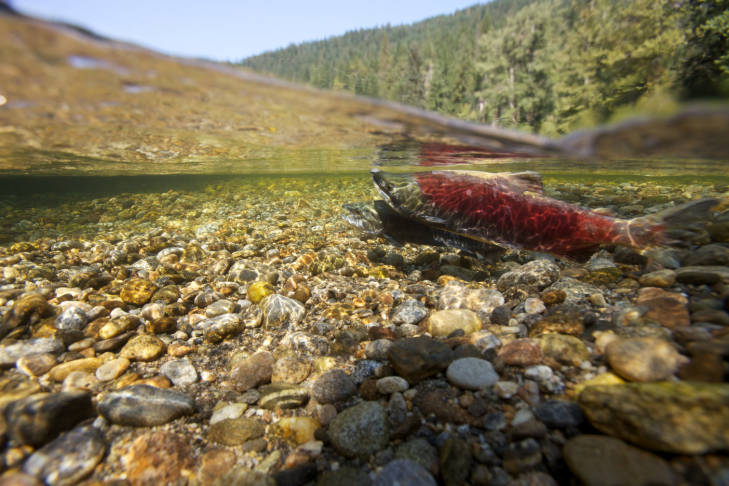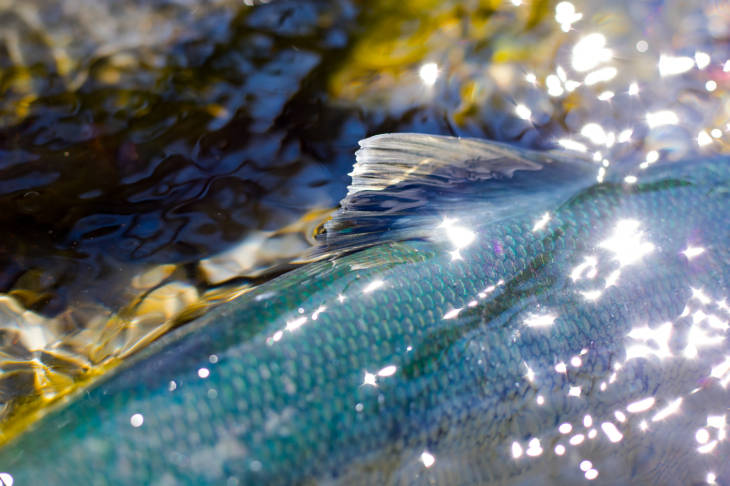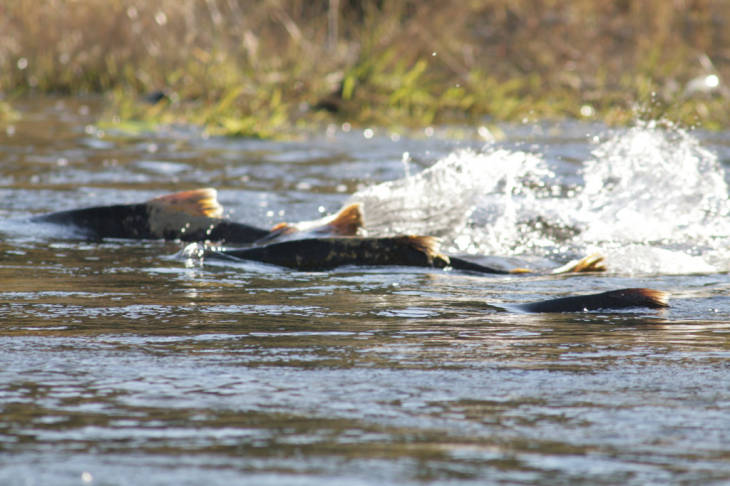We have much more to do and your continued support is needed now more than ever.
Salmon for Chummies

Scale up your knowledge with these 5 facts
Salmon are a well-known fish, showing up in streams, rivers, and restaurants around the country…but how much do you really know about this important fish?
These bites of knowledge will help you get up to speed on salmon—from conservation practices to carotenoids. If you’ve always wanted to shoal off your knowledge, read on and take stalk.
1. One if by Sea, Two if by Stream

Salmon are anadromous fish. An-drama-wha? Anadromous (uh·na·druh·muhs) fish spend their lives in both fresh and saltwater. Typically born in the upper reaches of a stream, a juvenile salmon lives in freshwater (up to 2 years) before it swims out to sea where it will spend most of its life (up to 8 years), until it reaches a large size and returns to the freshwater stream where it was born, to spawn (reproduce).
2. Salmon know their way back home

Salmon swim back to the stream from whence they came—a strategy they evolved because the place they were born is typically a safe spot to return to. By returning to their own spawn site, they don’t waste time looking for a stream that provides good habitat and other salmon—but scientists aren’t completely sure how they find their way back. The prevailing theory is that salmon rely on earth’s magnetic field to navigate back to the river they left to enter the ocean, and from there they may rely on a smell memory bank to find their home stream.
3. Mood scales for different phases of life

Salmon can change color throughout their lifetimes. For example, a sockeye starts off as a cute speckled swimmer, then has blue-silver scales for most of adulthood. The sockeyes’ inner flesh is always red because the food they eat in the ocean is high in pigments known as carotenoids (the same thing that makes tomatoes red!). At the end of their lives, this carotenoid pigment becomes visible as the salmon return to spawning grounds, absorbing their scales so that the red pigment in their flesh is transferred to the skin and eggs.
4. Multisport athletes

Salmon can travel thousands of miles in their lifetime, sometimes swimming hundreds of miles from where they were born just to reach the ocean. On an average day, a salmon swims about 18 miles, but did you know they are also excellent climbers? A Chinook salmon can travel over 7,000 feet in elevation on its trek back to it’s spawning grounds.
5. Fostering fish develops future conservationists

Classroom programs like Fish Eggs to Fry, run by the Oregon Department of Fish and Wildlife, bring salmon eggs to classrooms for students to observe, research and eventually, release into the wild. These salmon fostering programs help cultivate future wildlife advocates by developing personal connections to the native fish species.
Now go school your friends…Anadromous…An-adra-moose? Ad-drama-whose?
Or if you’re not quite up to scale, just keep reading 🎵:






















